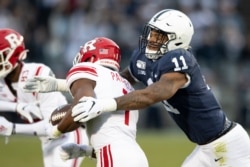Student Union
College Leaders Talk While Football Players Push to Play
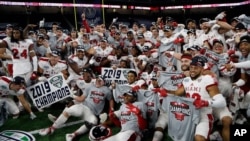
After the Power Five conference commissioners met Sunday to discuss mounting concern about whether a college football season can be played in a pandemic, players took to social media to urge leaders to let them play.
Big 12 Commissioner Bob Bowlsby said no decisions on the season have been made, but conceded the outlook has not improved.
"Are we in a better place today than two weeks, ago?" he said. "No, we're not."
[Power Five and Big 12 are football conferences, or collections of sports teams organized at the college level, like Big 10 and Pac-12.]
Bowlsby cited "growing evidence and the growing pool of data around myocarditis."
Myocarditis is inflammation of the heart and it has been found in some COVID-19 patients. There is concern it could be a long-term complication of contracting the virus even in young, healthy people, a group that has usually avoided severe cardiovascular symptoms.
Also Sunday night, the Big Ten's university presidents and chancellors held a previously unscheduled meeting, a person with knowledge of the meeting told The Associated Press. The person spoke on condition of anonymity because the meeting was not announced by the conference.
Another person with direct knowledge of the meeting speaking on condition of anonymity said no votes were taken or decisions made about the college football season.
The final call on whether major college football will played this season rests in the hands of the university presidents who oversee the largest conferences.
All this activity comes a day after the Mid-American Conference became the first among 10 leagues that play at the highest tier of Division I college football to cancel fall sports because of concerns about keeping athletes from contracting and spreading COVID-19.
The MAC's decision came less than a month before the first games are scheduled to be played and raised questions if other conferences might follow.
Also on Saturday, the Big Ten slowed its ramp up to the season, announcing its teams would not be permitted to start full contact practices until further notice. The Big Ten season is scheduled to start Labor Day weekend.
Meanwhile, college football players took to social media Sunday to push for a season, led by Clemson quarterback Trevor Lawrence with a series of tweets.
"People are at just as much, if not more risk, if we don't play," Lawrence tweeted. "Players will all be sent home to their own communities where social distancing is highly unlikely and medical care and expenses will be placed on the families if they were to contract covid19."
Penn State tight end Pat Freiermuth had a similar message.
"Since day one coming back to campus the Penn State Football staff and medical experts have put our health and safety first, above anything else," he tweeted. "The guidelines put into place keep us safe while playing the game we love. We are ready to play and we want to play."
Other players tweeted with the hashtag #WeWantToPlay, and within a few hours that movement merged with another. Lawrence, Ohio State quarterback Justin Fields, Oklahoma State All-America running back Cuba Hubbard, Alabama running back Najee Harris and numerous other players from across the country posted a graphics with #WeWantToPlay and #WeAreUnited, the hashtag used by a group of Pac-12 players who announced a college player rights movement a week ago.
Under the logos of each Power Five conference — ACC, Big Ten, Big 12, Pac-12 and SEC — the players pronounced their platform:
- We all want to play football this season.
- Establish universal mandated health & safety procedures and protocols to protect college athletes against COVID-19 among all conferences throughout the NCAA.
- Give players the opportunity to opt out and respect their decision.
- Guarantee eligibility whether a player chooses to play the season or not.
- Use our voices to establish open communication and trust between players and officials: Ultimately create a College Football Players Association.
- Representative of all Power Five conferences.
The parents of Ohio State football players weighed in, too, posting a letter saying they were confident in the university's plan to keep their sons safe.
"We believe that this age group represents some of the healthiest individuals, while we recognize the risk cannot be eliminated, we believe the risk is minimal and the season can safely and responsibly occur," wrote the Football Parents Association at Ohio State.
Notre Dame athletic director Jack Swarbrick said he has heard the same from Fighting Irish football players. Notre Dame has had only two COVID-19 cases since it began testing athletes.
"I've been around our guys and they thinks it's safe and they want to try and play," Swarbrick said. "If we change course, we better be able to articulate the reason for doing so to our student-athletes. They are going to want to know why."
See all News Updates of the Day
- By VOA News
Michigan State international students get their own space

Michigan State University in East Lansing, Michigan, is setting aside a space in the International Center for international students.
Nidal Dajani, vice president of the school's International Student Association, said that the club plans to use the space to host events and hopes to collaborate with other student groups.
- By Dylan Ebs
International students find community during Pride Month
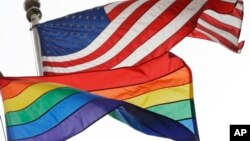
For LGBTQ+ international students, Pride Month, observed in June, is a unique time to reflect.
They hold on to multiple identities — both their LGBTQ+ identity and their cultural background — but coming to terms with them is not always easy.
For graduate student David Zhou, these identities can feel conflicting as transgender rights in China remain a controversial issue and spaces for LGBTQ people close. Zhou, 25, is transgender and pursuing an education in the STEM field at an urban university in the Midwestern United States.
VOA is using a pseudonym for Zhou’s first name and is not naming his university to protect his identity due to safety concerns back home in China. Zhou is not open about his transgender identity to his family.
During Pride Month, Zhou said he attended multiple LGBTQ+ events in his community and is surrounded by a supportive group of LGBTQ+ students who can relate to his experiences. But he’s not open about his identity to everyone on campus and said he doesn’t disclose his preferred pronouns to everyone to avoid transphobic comments.
“I feel like I have to make some judgments of the character of that person to see if they’re a good person to disclose [my identity] to,” Zhou said.
Zhou’s Pride Month celebrations included attending local markets with LGBTQ+ vendors and hanging out with his LGBTQ+ friends.
“They normalized being trans and for a long time I feel like trans identity is, should I say a vulnerability, brings me fear and worrying about discrimination, but having those events are helpful because it allowed me to see that queer people could just [live] openly,” he said.
At social events where few international students are present, Zhou said it can be tough to fit in.
“There's a lot of times like when they were talking about things I kind of, don't really understand, mostly because I kind of lack some background experience or knowledge,” he said.
Zhou said he is not aware of specific groups for LGBTQ+ international students at his university, but said international students are more prevalent in graduate programs and therefore find representation in organizations for LGBTQ+ graduate students.
In China, transgender individuals must obtain consent from an “immediate family member,” even for adults hoping to transition, which critics say limits the autonomy of transgender individuals while supporters say the policy protects doctors from violence by upset parents.
Struby Struble, a former coordinator of the University of Missouri LGBTQ+ Resource Center, told NAFSA: Association of International Educators in 2015 that LGBTQ+ international students face a “double barrier” on campus.
“With their international student friends, they feel isolated because they’re the LGBT one,” she said. “But then among the LGBT students on campus, they feel isolated because they’re the international one.”
Nick Martin, associate director of the Q Center, Binghamton University’s LGBTQ+ student support office, said when international students tour the center, there’s often a sense of hesitation as they enter a type of space that may not be present in their home country.
“I compare that to a year in after they've come into the space, they've again, maybe come to some of our events, they've got more connected,” he said.
Martin said graduate students have a unique interest in the Q Center as they may use the office for research and advocacy purposes that align with their studies.
“For older students, there may be hesitancy in a different way, but I think it's more in the vein of they want to do some of the advocacy work,” he said.
Martin said he thinks about how both his office and BU’s international student office can support students who come from countries with few — if any — protections for LGBTQ+ individuals.
“It's been a learning process of what those students really need, but I think I've kind of learned that a lot of students are just looking for the safe space that we offer,” Martin said.
- By VOA News
International students discuss US campus culture shock
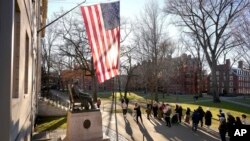
International students at De Anza College in Cupertino, California, talked about culture shock in an article in La Voz News, the student newspaper.
"It felt like a major culture shock. Everything was so different, from academics to mannerism," said a student from Mexico.
Read the full story here.
These are the most expensive schools in the US
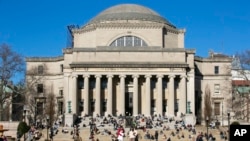
High tuition costs along with housing and food expenses can add up for students at U.S. colleges and universities.
MSNBC looked at the most expensive schools in the country, with one costing more than $500,000 for a bachelor’s degree. (June 2024)
Uzbekistan students admitted into top US universities
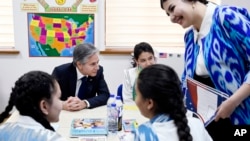
Students from Uzbekistan are among the international students admitted to top colleges and universities in recent years.
Gazata.uz profiled some of the Uzbekistan students attending Harvard, Brown, Princeton and other U.S. universities. (June 2024)




